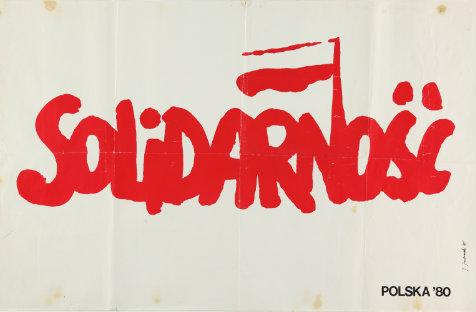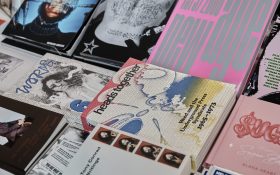Each day, citizens of the developed world are bombarded with imagery designed to persuade us. Everywhere we look we find advertisements informing us of the latest consumer items: slogans to provide us a simple frame to help the viewer grasp what’s on offer; and logos, the stamp of ownership and prestige. Advertising is so omnipresent it has become an effortlessly digestible form of communication.
But what happens when these creative tactics are used, not for commercial products, but for social movements and political causes? It is perhaps this question which has inspired a new exhibition at the Art Gallery of Ballarat, where 50 years worth of political posters and other paraphernalia are being exhibited for the next month.
The works span the breadth of social and political issues in Australia and abroad since the 1960s. They address the broad themes plaguing humanity: war, racism, sexism, disease, environmental destruction, nuclear proliferation, consumerism, and political leadership and power. The events covered range from 1960s activism and Vietnam War protests to efforts to address public health crises such as AIDS in the 1980s.
Passion and urgency is a commonality among the works. Regardless of the cause, each image cries out for the viewer’s attention – to be heard, and better yet, understood. The intention of messages ranges to both extremes of the spectrum. From the pure and simple I = U (equality) (Yarom Vardimon, 1999) to more complex, contextually driven, and convoluted issues. A fine example of the latter is the Art Worker’s Coalition’s use of the shockingly gruesome poster And babies? And babies. (1969), which aimed to draw attention to the perpetrators of the infamous Mai Lai massacre. This poster was up-cycled by the group in an action at New York City’s Museum of Modern Art in 1970, in a demonstration disputing the framing of Picasso’s work Guernica as simply a formalistic study, rather than Picasso’s response to the bombing of the Basque town during the Spanish Civil War.
Titles in block letters stuck onto the walls reflect humanity’s last 50 years of struggles and strife. The posters wage a silent battle of colour, composition, slogan, symbolism and design to grab your attention. Together, the chorus of symbols and slogans plead, probe, and cajole you to take action: Free Pussy Riot! Stop global warming!
Seeing all of these items together, in the age of the Internet, raises interesting questions. Are posters still relevant in the era of decentralized digital communications and social media?
Got the Message? gives you a world-weary hangover. Common symbolism, instantly understood, such as a skull, a child, hands, and blood, are used for messages that differ monumentally in complexity. It is a valuable experience entering the gallery and considering the context of these posters. Not for the fainthearted, the exhibition opens up all of the issues that have been and still are a problem for the human race. The messiness and rawness of their original use, such as in a protest march, contrasts strikingly with the tame, tranquil environment they are now viewed in, allowing a surreal form of critical distance to be achieved.
Rating: 4 ½ stars out of 5
Got the Message? 50 Years of Political Posters
Art Gallery of Ballarat
2 March – 14 April





